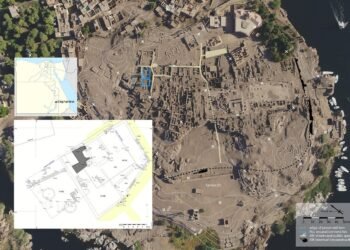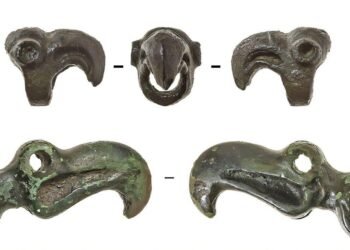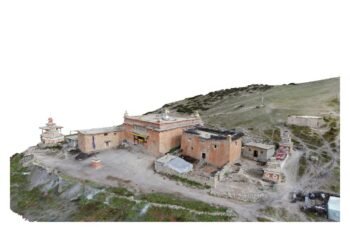Archaeologists from the Bavarian State Office for Monument Preservation have revealed a previously unknown Romanesque religious structure on Frauenchiemsee, an island located within Lake Chiemsee, Germany.

The structure, detected through ground-penetrating radar measurements, lies buried beneath the surface at a depth of approximately 1 meter. Measuring 19 meters in diameter, it presents an octagonal central building layout with an ambulatory formed by eight supports and four extensions arranged in a cross shape. This architectural pattern is remarkably rare in pre-Romanesque and Romanesque sacred architecture north of the Alps, making it a notable discovery.
Matthias Pfeil, the chief conservator of the Bavarian State Office for Monument Preservation, underscores the uniqueness of the finding, stating, “Central buildings are rare in pre-Romanesque and Romanesque sacred architecture north of the Alps, making them a very individually designed architectural form.”

The researchers believe that the structure may have been constructed as a place of veneration, possibly linked to Blessed Irmgard (also known as Irmengard), who held significant religious stature during the mid-9th century. Irmgard, daughter of King Louis the German and great-granddaughter of Charlemagne, served as the first abbess of Frauenwörth Abbey, where she restored and expanded the premises, establishing a Benedictine convent for nuns. Her legacy was marked by veneration, culminating in her beatification by Pope Pius XI in 1929.

Markus Blume, Bavaria’s Minister of Culture, says that such a floor plan of a Romanesque central building is extremely rare north of the Alps. So, it remains exciting to see how science will categorize this find historically.”
Despite the rich history of the Frauenchiemsee island, including the Frauenwörth Monastery founded around 782 by Duke Tassilo III, the existence of this ancient cult site remained concealed from historical records and maps. Armin Krämmer, mayor of Chiemsee, states: “The existence of an older predecessor building is also a great surprise for us.”
The connection between the newfound structure and the veneration of Blessed Irmengard prompts further inquiry into its historical context. The researchers speculate that the construction of the additional memorial building might have coincided with the rebuilding of the monastery in 1001, following the opening of Irmengard’s grave to promote her veneration. However, conclusive evidence regarding this connection awaits further scientific evaluation and analysis of the newfound data.






















